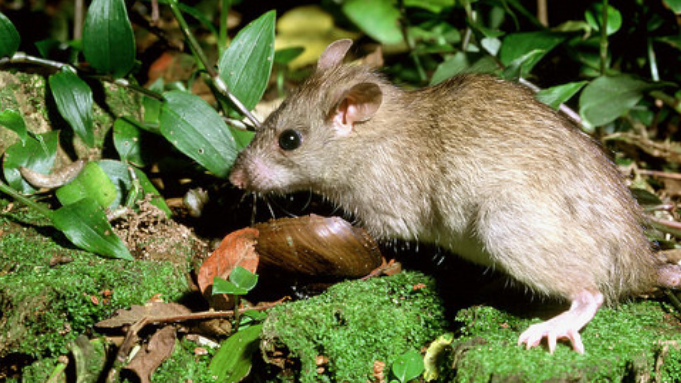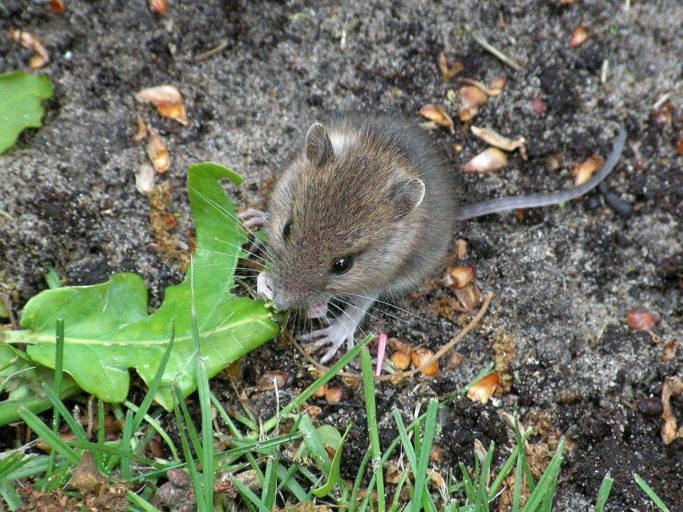Up until the 1950s, most pest control toxins for vertebrates, including rats, were fast-acting. While a quick death for pests is a good thing humane-wise, the issue was, rats didn’t necessarily die. They’d try a little toxin, quickly feel the effects and sensibly refuse to have anything more to do with it, before they’d consumed a lethal dose. They became bait shy.

Slower acting anticoagulant toxins like brodifacoum are commonly used now and, because they are slow acting, rats are much more likely to consume a fatal dose, well before any effects are felt. But these 2nd generation anticoagulants also have issues including bioaccumulation in the environment.
So what if different types of toxin were carefully combined? Could a new toxin be created that is less slow, doesn’t accumulate in the environment and is still effective?
Researchers, Charles Eason, Lee Shapiro, Candida Eason, Duncan MacMorran and James Ross have been investigating a new combination of currently used toxins and recently reported their results in the New Zealand Journal of Zoology.
“In New Zealand, because of our conservation needs and TB management challenges there are six acute acting poisons currently registered for possum control: 1080 (sodium fluoroacetate), cyanide, cholecalciferol (Vitamin D3), zinc phosphide, sodium nitrite and phosphorus. 1080 and cholecalciferol can be used for the control of rodents as well as possums. Sodium nitrite has been developed for control of possums and feral pigs and is particularly humane comparing well with cyanide.”

“In an optimised mammalian pest control tool box there will be both fast-acting acute toxins and slower acting anticoagulants, for example, where maintenance control of low-density possum populations and long-term suppression or elimination of possum populations is a requirement, and neophobia or trap or bait-shyness may develop if acute toxins or traps are used repeatedly.”
Early ‘first generation’ anticoagulants aren’t particularly effective with possums and have a different anticoagulant effect in possums than is seen in rats.
“Very large amounts of baits containing first-generation anticoagulants alone have to be eaten by possums compared with rats for baits to be effective which is costly, and combined with their questionable effectiveness the only anticoagulant effective for controlling possums is brodifacoum. Unfortunately, brodifacoum and other second-generation anticoagulants have a tendency to bioaccumulate and cause secondary poisoning.”
With second-generation anticoagulant exposure in non-target species documented globally, it’s not just New Zealand researchers who are keen to find a better way of controlling pests.
“There has been an interest in researching the combination of the first-generation anticoagulant with cholecalciferol, as this combination has been proven to be effective in rodents resistant to first-generation anticoagulants alone. The potential to produce bait that is as potent as brodifacoum for possum and rodent control, without significant residue concerns is important. A bait containing diphacinone and a very small amount of cholecalciferol, as an additive, will potentially meet the specification of being ‘low residue’ (i.e. less persistent), slow acting, lower cost and should be safer for non-target species. It has been developed in New Zealand for the control of possums and rats and in parallel has been researched for the control of California voles, an agricultural pest in the US.”
Why diphacinone and cholecalciferol? Well diphacinone has a short half-life meaning it’s less likely to bioaccumulate. Cholecalciferol (vitamin D3) was developed in the 1980s as a rodenticide and is registered in New Zealand for rodent and possum control in baits at 0.8% and 0.4%.
The researchers carried out both cage and field trials to test their new toxin combination.
“A combination of diphacinone at 0.005% and cholecalciferol at 0.06% produces a slow-acting bait that is effective at killing possums and rodents. Cage trials with groups of possums and ship rats (Rattus rattus) achieved a mortality of 87% and 86% for possums and ship rats, respectively. Two field trials, each 200 hectares in size, targeting possums, ship rats and mice achieved an average reduction in the abundance of 94% for possums, 94% for ship rats and 80% for mice.”
Mice shouldn’t be overlooked. They difficult to control but in our forests, they’re a key food source for stoats and feral cats.
“High numbers of mice directly contribute to higher rates of predation for native birds. Due to this, we also monitored the numbers of mice in the field trial to assess the potential of this compound for mice control.”
The results look promising and approval of the new bait has already been granted.

“The combination of diphacinone and cholecalciferol appears effective and has a favourable risk profile compared with second-generation anticoagulant rodenticides, such as brodifacoum. Approval of this new bait by the New Zealand Environmental Protection Agency was granted in 2018 and final registration obtained from the Ministry of Primary Industries in 2019.”
The new bait combination may also be an improvement in terms of pest welfare, as time to death is reduced.
“Brodifacoum is not considered to be humane. We believe the new diphacinone and cholecalciferol bait offers a comparative improvement. The average time to death for rats and possums poisoned with the combination of diphacinone and cholecalciferol was similar or shorter than for brodifacoum alone and this is most apparent for possums. With second-generation anticoagulants, such as brodifacoum, as sole agents, sickness is protracted and the duration of sickness and time to death variable. The authors concluded that the welfare of poisoned animals could be practically improved by shortening the time until death using drugs that potentiate the anticoagulant action. This aspiration has been advanced with the new D+C bait.”
So what’s next on the research horizon?
“Repeat, resetting toxin delivery systems that exclude non-targets called ‘Spitfires’ have been shown to have potential, used in a DOC 200 trap box and preliminary trials with a paste containing diphacinone at 0.005% and cholecalciferol at 0.06% killed nine out of ten possums. Targeted delivery using Spitfire devices for rats and possums remains an aspiration for the future as they would limit risk to non-target species and complement the development of solid extruded cereal baits containing diphacinone and cholecalciferol described in this paper.”
The full research report is published in the New Zealand Journal of Zoology and is also available through Researchgate.
Diphacinone with cholecalciferol for controlling possums and ship rats (2019)

